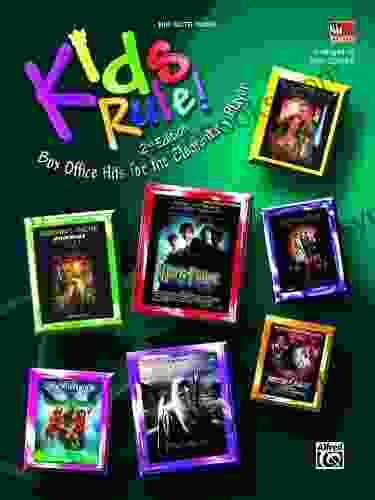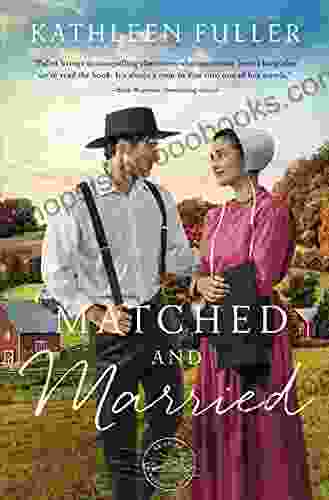Planning in the Public Domain: A Comprehensive Guide to Land Use Planning and Management

Planning in the public domain is a complex and challenging process. It involves balancing the needs of a variety of stakeholders, including landowners, developers, government agencies, and the public at large. In Free Download to be successful, planners must have a deep understanding of the planning process, as well as the legal and policy framework that governs land use.
This book is a comprehensive guide to land use planning and management. It provides a detailed overview of the planning process, from the initial identification of needs and goals to the implementation and enforcement of plans. The book is written by a team of experts with experience in both the public and private sectors, and it is packed with practical advice and examples.
The planning process is a cyclical process that involves the following steps:
4.2 out of 5
| Language | : | English |
| File size | : | 11522 KB |
| Text-to-Speech | : | Enabled |
| Screen Reader | : | Supported |
| Enhanced typesetting | : | Enabled |
| Word Wise | : | Enabled |
| Print length | : | 493 pages |
| X-Ray for textbooks | : | Enabled |
- Identification of needs and goals. The first step in the planning process is to identify the needs and goals of the community. This can be done through a variety of methods, such as surveys, public meetings, and workshops.
- Data collection and analysis. Once the needs and goals of the community have been identified, the next step is to collect and analyze data about the community. This data can include information about the population, the economy, the environment, and the land use patterns.
- Development of alternatives. Once the data has been collected and analyzed, the next step is to develop a range of alternative plans. These plans should be based on the needs and goals of the community, and they should take into account the data that has been collected.
- Evaluation of alternatives. Once the alternative plans have been developed, the next step is to evaluate them. This evaluation should be based on a variety of criteria, such as the cost, the environmental impact, and the social impact.
- Selection of a preferred alternative. Once the alternatives have been evaluated, the next step is to select a preferred alternative. This alternative should be the one that best meets the needs and goals of the community.
- Implementation of the plan. Once the preferred alternative has been selected, the next step is to implement it. This can be done through a variety of methods, such as zoning, subdivision regulations, and capital improvement plans.
- Monitoring and evaluation. Once the plan has been implemented, the next step is to monitor and evaluate it. This will help to ensure that the plan is meeting the needs of the community and that it is being implemented as intended.
The legal and policy framework that governs land use planning and management is complex and ever-changing. Planners must be familiar with the following laws and policies:
- The Constitution. The Constitution of the United States provides a number of protections for property owners, including the right to due process and the right to equal protection under the law. These protections can limit the ability of governments to regulate land use.
- Federal laws. There are a number of federal laws that affect land use planning and management, such as the Clean Water Act, the Clean Air Act, and the National Environmental Policy Act. These laws can impose restrictions on development and can require planners to consider the environmental impacts of their decisions.
- State laws. State laws also play a significant role in land use planning and management. State laws can establish zoning requirements, subdivision regulations, and other land use controls.
- Local laws. Local governments have the authority to adopt land use plans and regulations. These plans and regulations can be used to control development and to protect the environment.
Planning in the public domain is a complex and challenging process, but it is also an essential one. By following the principles outlined in this book, planners can help to create communities that are livable, sustainable, and prosperous.
Alt attributes for images
- Image 1: A group of people looking at a map of a city.
- Image 2: A hand holding a pen and drawing a line on a map.
- Image 3: A group of people sitting at a table, discussing a land use plan.
- Image 4: A building under construction.
- Image 5: A park with people playing and enjoying the outdoors.
4.2 out of 5
| Language | : | English |
| File size | : | 11522 KB |
| Text-to-Speech | : | Enabled |
| Screen Reader | : | Supported |
| Enhanced typesetting | : | Enabled |
| Word Wise | : | Enabled |
| Print length | : | 493 pages |
| X-Ray for textbooks | : | Enabled |
Do you want to contribute by writing guest posts on this blog?
Please contact us and send us a resume of previous articles that you have written.
 Book
Book Novel
Novel Page
Page Chapter
Chapter Text
Text Story
Story Genre
Genre Reader
Reader Library
Library Paperback
Paperback E-book
E-book Magazine
Magazine Newspaper
Newspaper Paragraph
Paragraph Sentence
Sentence Bookmark
Bookmark Shelf
Shelf Glossary
Glossary Bibliography
Bibliography Foreword
Foreword Preface
Preface Synopsis
Synopsis Annotation
Annotation Footnote
Footnote Manuscript
Manuscript Scroll
Scroll Codex
Codex Tome
Tome Bestseller
Bestseller Classics
Classics Library card
Library card Narrative
Narrative Biography
Biography Autobiography
Autobiography Memoir
Memoir Reference
Reference Encyclopedia
Encyclopedia Ute Nast Linke
Ute Nast Linke Ted Hughes
Ted Hughes Telani Lithgow
Telani Lithgow Craig Halloran
Craig Halloran Tracey Tokuhama Espinosa
Tracey Tokuhama Espinosa Craig Dilouie
Craig Dilouie P J Dinuzzo
P J Dinuzzo Connie Hamilton
Connie Hamilton Josie Jade
Josie Jade Hiromi Uehara
Hiromi Uehara Colin Burrow
Colin Burrow David Baer
David Baer Cyrus Townsend Brady
Cyrus Townsend Brady Ross Nickerson
Ross Nickerson Cory Smith
Cory Smith D Hues
D Hues Dalai Lama
Dalai Lama Collyn Rivers
Collyn Rivers Denise Smith
Denise Smith Michelle Ray
Michelle Ray
Light bulbAdvertise smarter! Our strategic ad space ensures maximum exposure. Reserve your spot today!

 Griffin MitchellEscape to Paradise: Unveiling the Enchanting Inn at Sand Castle Beach Aloha
Griffin MitchellEscape to Paradise: Unveiling the Enchanting Inn at Sand Castle Beach Aloha
 Stuart BlairUnveiling the Secrets of Pariah Bequin: A Warhammer 40,000 Epic by Dan Abnett
Stuart BlairUnveiling the Secrets of Pariah Bequin: A Warhammer 40,000 Epic by Dan Abnett Chadwick PowellFollow ·7.3k
Chadwick PowellFollow ·7.3k Bob CooperFollow ·13k
Bob CooperFollow ·13k Ryan FosterFollow ·14.2k
Ryan FosterFollow ·14.2k Walt WhitmanFollow ·10.6k
Walt WhitmanFollow ·10.6k Clark BellFollow ·17.3k
Clark BellFollow ·17.3k Eli BrooksFollow ·4.2k
Eli BrooksFollow ·4.2k Oliver FosterFollow ·2.3k
Oliver FosterFollow ·2.3k Theodore MitchellFollow ·15.9k
Theodore MitchellFollow ·15.9k

 Cooper Bell
Cooper BellKids Rule Box Office Hits for the Elementary Player
Empowering Young Performers:...

 Gabriel Blair
Gabriel BlairUnraveling the Enigma: Political Alienation and Its...
In the labyrinthine tapestry of human...

 Anthony Burgess
Anthony BurgessBe a Great Singer: Unleash Your Musical Talent with...
Do you dream of singing with...

 Heath Powell
Heath PowellDive into a Musical Masterpiece: "10 for 10 Sheet Music...
An Enchanting Journey Through Broadway...

 Guy Powell
Guy PowellUniversal Rights, Systemic Violations, and Cultural...
The notion of universal human rights is a...
4.2 out of 5
| Language | : | English |
| File size | : | 11522 KB |
| Text-to-Speech | : | Enabled |
| Screen Reader | : | Supported |
| Enhanced typesetting | : | Enabled |
| Word Wise | : | Enabled |
| Print length | : | 493 pages |
| X-Ray for textbooks | : | Enabled |










